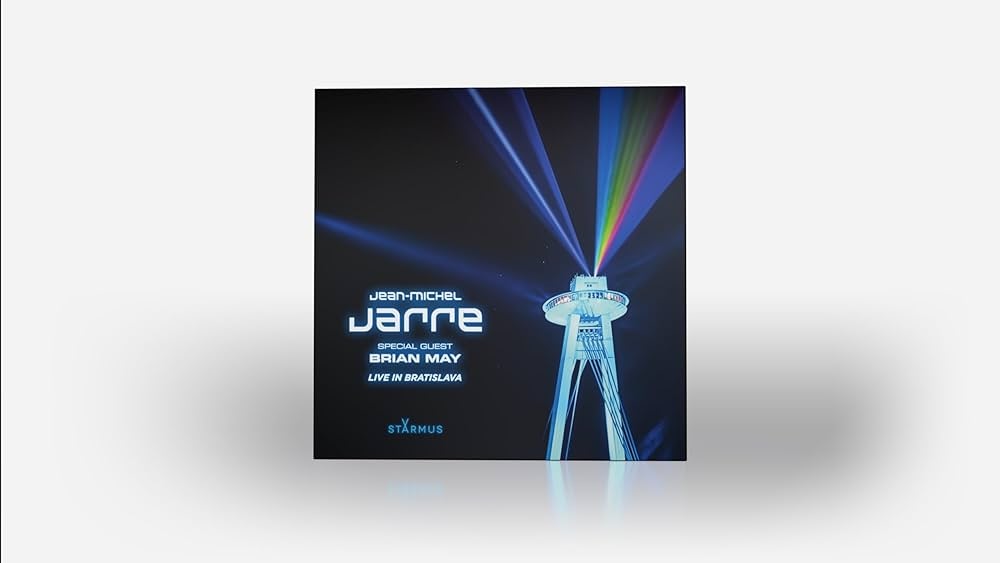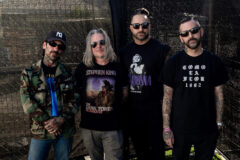When electronic-ambient-new age pioneer Jean-Michel Jarre was working on 1976’s Oxygene, in his makeshift home studio, he often had to tape down two preset buttons of his Korg drum machine to achieve the effect he wanted. Thanks to the breakout success of that record and its winning blend of bright keyboard melodies and warped analog synths, Jarre didn’t have to resort to such ad-hoc methods for long. Live in Bratislava, taped last year in front of more than 100,000 enthusiastic Slovakians, shows us how far Jarre has come from his old workspace. The spectacle can be experienced in numerous editions, from a concert film to a two-CD-set to a collector’s edition that includes a coffee table book.
And yet the bombast never overwhelms Jarre’s natural effervescence. Surrounded by a bank of instruments (vintage analog gear from the from the Oxygene days), Jarre commands the stage, accompanied by a live drummer, a multi-instrumentalist (violin, bass, didgeridoo), and, for a few songs, Queen guitarist Brian May, a small choir, and the brass section of the Slovak Philharmonic. When you throw in the impressively choreographed light show, fireworks, drones, and massive video display, Jarre’s magnetism seems like an even more impressive feat. (75 at the time of the concert, Jarre’s ability to pass for a member of the reunited Oasis might be the most astounding special effect here.)

Delivering an array of hits, deep cuts, and recent material, Jarre appears absolutely in his element, twiddling knobs, bashing out his ringing, elegant melodies and generally making every EDM artist who’s come after him, from Daft Punk to Moby to Fatboy Slim, look like amateurs. He treats the classics—two tracks apiece from Oxygene and its sharper 1978 follow-up, Equinoxe—with respect, retaining their primitive, almost chintzy charm while building out their enormous harmonic and rhythmic potential. More recent material, like 2016’s harder-edged “Exit,” featuring a monologue from exiled whistleblower Edward Snowden, proves that Jarre can compete with the likes of Aphex Twin or Autechre when it comes to serrated swagger. He shows off his versatility elsewhere as well: “Falling Down,” also from 2016, involves some deliciously processed vocals, and for the introduction to “Oxygene 2” Jarre picks up an electronic flute.
Even Brian May gets into the spirit, turning what could easily have been a perfunctory performance into an opportunity to deliver some out-there solo playing that flirts with noise. He also joins Jarre, the orchestra and choir for a reworking of Dvorak’s “New World Symphony,” another endeavor that somehow overcomes its own artifice and floats like a kite, borne aloft by Jarre’s intuitive feel for the expressive sweep of classical music.
Jarre began in the avant-garde, working with musique concréte composer Pierre Schaeffer as a young man. He never lost his knack for incorporating the murky, dense and dissonant into his compositions, somehow making his surface sweetness, bouncy anthems, and romantic flair even more effective. Jarre hasn’t aged into the cool cachet of electronic innovators like Kraftwerk, Tangerine Dream, or even Giorgio Moroder. Instead, he’s followed his own muse, transforming the experimental into the consumer-friendly, and making the future sound like a song you’ve heard your entire life.


Leave a comment